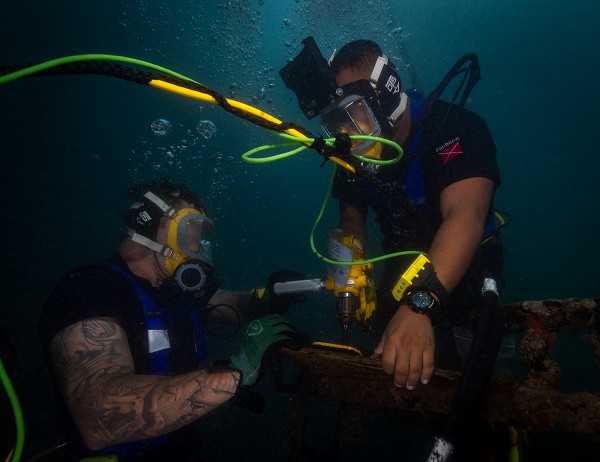 Pearl Harbor, HI. (July 21, 2022): In this photo by Navy Chief Eric Chan, a U.S. Navy diver and a Mexican navy diver participate in underwater construction activities as part Rim of the Pacific exercises involving 26 nations which is the largest maritime training event held each year. The Navy’s Mobile Diving Salvage Unit 2, which normally operates in warm, deep-water environments, is training for underwater missions in the frozen Arctic.
Pearl Harbor, HI. (July 21, 2022): In this photo by Navy Chief Eric Chan, a U.S. Navy diver and a Mexican navy diver participate in underwater construction activities as part Rim of the Pacific exercises involving 26 nations which is the largest maritime training event held each year. The Navy’s Mobile Diving Salvage Unit 2, which normally operates in warm, deep-water environments, is training for underwater missions in the frozen Arctic.
Camp Ripley, MN. (November 22, 2022): As our adversaries expand their activities in the frozen north, America’s armed forces are refocusing efforts at training to fight, and win, in Arctic conditions. Normally deep-sea divers, America’s Mobile Diving Salvage Unit 2 (MDSU2) are learning to survive and thrive in the icy waters of Minnesota while testing themselves, and their equipment, in some of the most hostile environments known to man.
Camp Ripley is located near Little Falls, Minnesota on a 53,000-acre training center that is now home to Coast Guard and Navy divers training to operate both above and below the ice of its many frozen deep-water lakes. The ice diving training is part of the Navy’s Strategic Blueprint for the Artic as America builds a more cold weather capable force. For the past 20 years, most MDSU2 missions have been in the warm waters of the Middle East or Pacific but world events have underscored the need for divers to operate successfully in Arctic conditions.
The frozen lakes of Camp Ripley, operated by the Minnesota National Guard, provide an ideal training ground for divers to acclimate to sub-zero conditions while using unconventional tools like chain saws and sleds. The ice is often 16-inches thick with driving snow that limits mobility even for the most seasoned personnel. Above the ice, divers train in demolition and practice firing their M9 service pistols and M4 rifles. Below the ice, divers spend up to ten hours on the bottom of frozen lakes to adapt to this unforgiving environment.
The training concludes with a final evaluation mission where the dive company is called upon to locate and retrieve sensitive items in the snow and under lake surfaces in real world scenarios that force divers to adapt, improvise, and thrive in an Arctic setting.
The MDSU2, headquartered at Joint Expeditionary Base Little Creek-Fort Story, Virginia, is the Navy’s premier east coast diving and salvage unit capable of providing combat-ready deployable forces around the globe.
While navy divers test their skills in frozen conditions, they are counting on their fellow Americans to sustain them and their families. Won’t you take a moment, right now, to contribute funds to Support Our Troops’ Patriot Brigade® that provides Yellow Ribbon Care Packages and recreational opportunities for our deployed servicemembers around the world. Please visit our secure website https://supportourtroops.org/donate to donate to America’s finest today!


